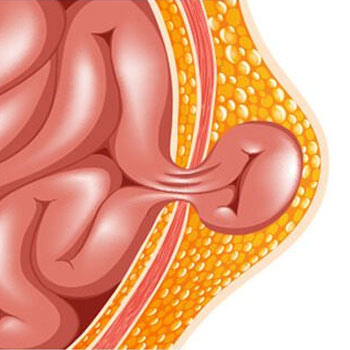What is Hernia Repair?
Hernia repair is a surgical procedure aimed at correcting hernias, which occur when an internal organ or tissue bulges through a weak spot in the muscle or surrounding tissue wall. Hernias can develop in various parts of the body, including the abdomen, groin, and diaphragm. Understanding the types, symptoms, and treatment options for hernias is essential for those affected by this condition
Types of Hernias
Hernias can be categorized based on their location in the body
Inguinal Hernia
This is the most common type, occurring in the groin area. It is more prevalent in men due to the natural weakness in the groin region
Femoral Hernia
Similar to inguinal hernias but less common, femoral hernias appear in the upper thigh near the groin. Women are more likely to develop this type of hernia
Umbilical Hernia
This type affects the area around the navel and is common in infants and overweight adults.
Hiatal Hernia
Occurring when part of the stomach pushes through the diaphragm into the chest cavity, hiatal hernias can cause gastroesophageal reflux disease (GERD).
Incisional Hernia
This type can develop at the site of a previous surgical incision, particularly if the wound did not heal properly.
Symptoms of Hernias
The symptoms of hernias vary depending on their type and severity. Common signs include
- Visible Bulge: A noticeable bulge or lump in the affected area, which may disappear when lying down
- Pain or Discomfort: Pain, discomfort, or a burning sensation at the hernia site, especially when bending over, coughing, or lifting heavy objects
- Weakness or Pressure: A feeling of weakness, pressure, or heaviness in the abdomen or groin
- Nausea and Vomiting: In severe cases, such as when the hernia is incarcerated or strangulated, nausea and vomiting may occur
Diagnosing Hernias
Diagnosing a hernia typically involves a physical examination by a healthcare professional. The doctor will assess the bulge and may ask the patient to cough or strain to better observe the hernia. Additional diagnostic tests, such as ultrasound, CT scans, or MRI, may be required to determine the hernia's size and exact location
What are the treatment options for Hernias?
Treatment for hernias depends on the hernia type, size, and severity. The primary treatment options include
Watchful Waiting
For small, asymptomatic hernias, doctors may recommend a watchful waiting approach, monitoring the hernia for any changes or symptoms.
Hernia Truss
A supportive garment worn to keep the hernia in place. This is a temporary solution and not a substitute for surgical repair
Surgical Repair
Surgery is the most effective treatment for hernias and is typically recommended for symptomatic or large hernias. There are two main types of hernia repair surgeries:
Open Hernia Repair
The surgeon makes an incision near the hernia site, pushes the protruding tissue back into place, and strengthens the muscle wall with sutures or mesh. This method is effective but may require a longer recovery period
Laparoscopic Hernia Repair
A minimally invasive procedure where the surgeon makes several small incisions and uses a laparoscope (a thin tube with a camera) to guide the repair. Mesh is often used to reinforce the muscle wall. This method usually results in less postoperative pain and quicker recovery.
Recovery and Aftercare
Post-surgery recovery and aftercare are crucial for a successful hernia repair. Patients are typically advised to:
- Rest and Avoid Strenuous Activities: Rest is essential during the initial recovery period, and patients should avoid heavy lifting or strenuous activities for several weeks.
- Follow a Healthy Diet: A balanced diet rich in fiber can help prevent constipation, which can strain the repaired area
- Adhere to Follow-Up Appointments: Regular follow-up appointments with the surgeon ensure proper healing and early detection of any complications
Hernia repair is a common and generally safe procedure that effectively addresses the discomfort and risks associated with hernias. Understanding the types, symptoms, and treatment options is crucial for those affected by this condition. If you suspect you have a hernia, consult a healthcare professional for a proper diagnosis and to discuss the most appropriate treatment plan for your situation. Early intervention can lead to better outcomes and a quicker return to normal activities.

